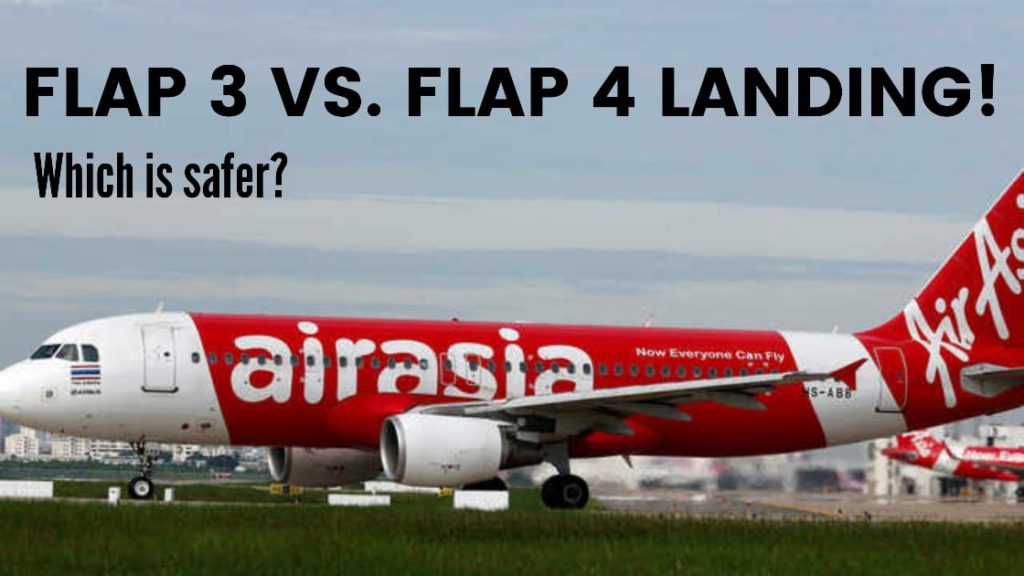Gaurav Taneja, a pilot by profession who runs a YouTube channel called Flying Beast, recently alleged violations of public safety norms by AirAsia. Gaurav on Sunday tweeted that AirAsia has suspended him for standing up for safe operations of an aircraft and its passengers and on Monday, he posted a detailed video on YouTube titled “Reasons behind suspension from my pilot job”. His video went viral across many social media platforms and was watched by millions, after which the Directorate-General of Civil Aviation (DGCA) was forced to start an investigation into the safety concerns raised by Gaurav against the airline company.
The Directorate General of Civil Aviation (DGCA) is the statutory body formed under the Aircraft (Amendment) Bill, 2020. This directorate investigates aviation accidents and incidents.It is headquartered at Sri Aurobindo Marg, opposite Safdarjung Airport, in New Delhi. At present, the Government of India is planning to replace the organisation with a Civil Aviation Authority (CAA), modelled on the lines of the American Federal Aviation Administration (FAA).
Gaurav in his video has raised 3 issues-
1.The fear of taking a sick leave
In the video, Gaurav talked about an environment that discouraged pilots from taking sick leave despite being unwell. “This is a job that is responsible for the life of at least 200 people and needs a high level of physical and mental fitness. With any other job, one could go to work despite feeling a bit under the weather. As a pilot, I can’t afford to do that.We (pilots) cannot operate if we are less than 100 percent and this is the regulation, and if you are not 100 percent and stillflying, then it’s comparable to murder as you are outing the lives of 180 passengers on board,” said Gaurav Taneja in his video.
2.SOPs not being followed
He alleges that the airline was not strictly adhering to the Standard Operating Procedures (SoPs) issued by the Government, on flying amidst the COVID-19 pandemic. These are some procedures to be followed within the aircraft. Taneja alleges that he was forced to delay a flight by 40 minutes because SoPs were not being followed.
Is it the responsibility of the pilot-in-command (PIC) to ensure SoPs are followed in the flight? Taneja said “The airline has money and resources but failed to provide even the smallest things to ensurepassengers and airline staff safety. The ‘chaltahai’ attitude in India is ahuge problem in the Airline industry.”
What is SoP?
Imagine for a moment that you work in the customer service department at a grocery store. A customer comes in one day and says they need to return a bag of bread. Most likely, the store you work for already has a set of written rules in place for how to handle this situation. That written set of rules is what is known as a standard operating procedure. Standard operating procedures are written, step-by-step instructions that describe how to perform a routine activity. Employees should complete them in the exact same way every time so that the business can remain consistent. A standing operating procedure should never be difficult to read or vague. It should be brief, easy to understand, and should contain actions steps that are simple to follow.[1]
3.Flap 3 vs. Flap-full
The third and final safety issue Mr. Taneja mentioned in his video was the landing module. An aircraft can land in two configurations, Flap 3 which saves fuel (approx. 8kg), and Flap Full which burns more fuel but guarantees a safe landing.
AirAsia demanded 98% Flap 3 landings from its pilots, even if it meant risking the lives of passengers. Gaurav Taneja who undertook ten landings in March said that owing to the steep and difficult conditions in Imphal, he used the flap-full configurationtwice. He mentioned that he was accused of having 71% flap 3 landing and not meeting the requirements set by the airlines.demerit points being automatically added in the pilot’s account which ultimately leads to slashed bonuses at the end of the year.
Flaps are part of wings of an aircraft and they are engaged to create drag during a landing or a takeoff.
Taneja gave the example of Imphal airport, where the plane descends more steeply as compared to other airports when approaching for landing. He said when an aircraft is coming down steeply, it needs to have a drag so that it remains slow, and in these circumstances, a pilot has to do a “Flap full” landing.
“In order to achieve targets, what would people do? They will do Flap 3 landings without considering whether it is safe or unsafe. This directly impacts the passenger safety,” he said in his YouTube video.
“If something happens during a Flap 3 landing, then the question would be asked to the pilot in command if he or she cares more about saving fuel or 180 passengers lives?”, Taneja said.
Who is a pilot in command?
The pilot in command (PIC) of an aircraft is the person aboard the aircraft who is ultimately responsible for its operation and safety during flight soon as he signs certain documents provided to him. He is responsible from the time the doors of an aircraft are closed till they reopen. The PIC is the person legally in charge of the aircraft and its flight safety and operation, and would normally be the primary person liable for an infraction of any flight rule. Both the airline company and the pilot in command have to follow the safety guidelines but in case any incident occurs, the pilot in command will be responsible, which ultimately may result in permanent cancellation of his/her license.
Is flap 3 and flap 4(flap-full) landing allowed in India?
[Image 1.3]
Yes! Both types of landings are allowed in India as well as abroad.[2]
Is flap 3 landing safe?
Yes! Both types of landings are safe, but when to do which type of landing depends upon circumstances explained below. Most of the landings abroad are flap 3 landing because their weather conditions are not as uncertain as that of the weather condition in India.
What is flap 3 and flap 4 (flap full) landing?[3]
Friends, you must have seen the way birds land on the ground by using their wings. Sometimes while landing their wings are half-open while sometimes they are fully open. The same procedure is followed during the landing of an aircraft. During the landing of an aircraft, you must have seen the flaps attached to the wings going down and the spoiler moving up, creating drag. This drag is used to reduce the speed of an aircraft, maintain stability while landing and hold the aircraft from jumping on the runway.
These flaps are controlled from a small lever which is present on the left side of the thrust lever inside the cockpit. This small lever has some numbers written on it, normally in commercial flights these numbers range from 1 to 40 degrees. During the landing of an aircraft, the pilot focuses on the centerline of the runway and the glide slope (see image 1.4). The glide slope is the angle that the glide path of an aircraft or spacecraft makes with the land (horizontal).
[Image 1.4]
[Image 1.5]
[Image 1.7]
Glide slope can vary from 2.8 to 3.5 degrees (see image 1.5). Normally an aircraft lands at a glide slope of 2.5 degrees but in case during a landing, if any building or any mountain comes in between, the pilot lands the aircraft by increasing the angle of the glide slope from 2.8 to 3.5 degrees (see image 1.6). If the pilot extends the angle of the glide slope beyond 3.5 degrees, then this invites to higher chances of an aircraft crash (see image 1.7). So it is very important to keep the angle of the glide slope in between 2.8 to 3.5 degrees and to maintain this angle flaps are used.
Now let us understand what is flap 3 and flap 4 which is also known as full-flap-
In the above image, you can see the numbers mentioned ranging from 1 to 40 degrees on the lever which is used to control the flap. These numbers are divided into 4 parts.
- Flap 1 from 1 to 10 degrees
- Flap 2 from 10 to 20 degrees
- Flap 3 from 20 to 30 degrees
- Flap 4 from 30 to 40 degrees
These numbers may vary from aircraft to aircraft. Some aircraft can have a maximum number 30 or 35 degrees and accordingly it is divide into 4 parts. An aircraft can land in two configurations i.e flap 3 and flap 4.
What is the difference between both?
Suppose there is no mountain or building near the runway (see image 1.4) and the runway is long, then in that case the pilot will land the aircraft at glide slope angle of 2.8 degrees. As the runway is long and the angle of glide slope is minimum i.e 2.5 degrees, flap 3 landing is done, as it easily stops the aircraft in this scenario but if the runway is small then, in that case, the pilot has to use flap-full (flap 4) i.e the pilot has to do flap full landing. Except this in a scenario when there is a mountain or building near the runway (see image 1.5), the glide slope will be more i.e nearly 3.5 degrees and practically in such a scenario, the pilot will choose flap 4 or flap-full for a safer landing. In such circumstances, it is better to do flap 4 landing as flap 3 landing may not be safe.
In clear words-
If the angle of glide slope is less flap 3 and flap 4 both the landings are safe but if the angle is more, flap 4 landing is safer.
Apart from this, there are some more circumstances when the pilot has to decide when does he want to do flap 3 or flap 4 landing, like in case of bad weather, slippery runway, if the runway is built on a downward slope, etc., in such cases, the pilot would use flap-full (flap 4) for a safer landing. According to Gaurav, Air Asia demands its pilots to do 98% flap 3 landing this is because the company wants to save fuel as Flap 3 saves fuel (approx. 8kg).
Conclusion
If any company is calculating its pilots merit or demerit based on flap 3 or flap 4 landing then this means that they are motivating the pilot to do more and more flap 3 landing and less flap 4 landing, which directly depends upon the safety of the passengers. So, according to the circumstances which type of landing has to be done should be only decided by the pilot in command and not by any airline company. So, any such policy compelling the pilot to do flap 3 landing is against public safety.
By-
Amit Agarwal
[1]What is a Standard Operating Procedure (SOP) and How to Write It, Amit, Tallyfy, available at https://tallyfy.com/standard-operating-procedure-sop/
[2]Approaches and Landings, Airplane Flying Handbook, Federal Aviation Administration, available athttps://www.faa.gov/regulations_policies/handbooks_manuals/aviation/airplane_handbook/media/10_afh_ch8.pdf
[3]Ibid.











